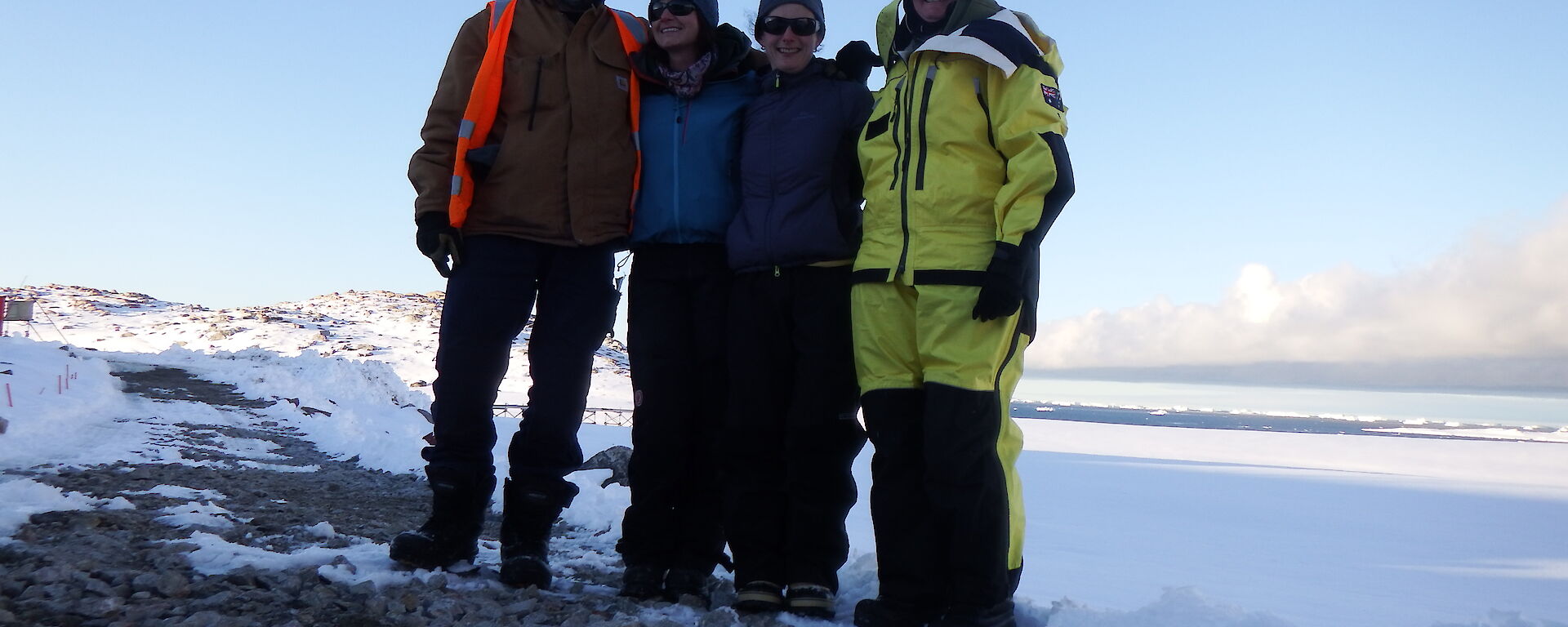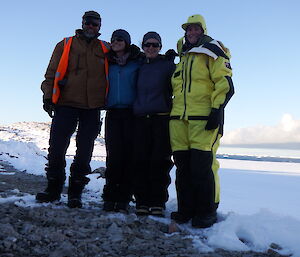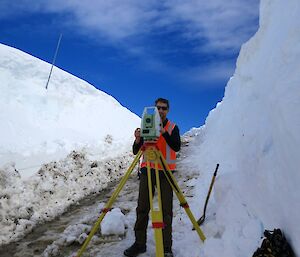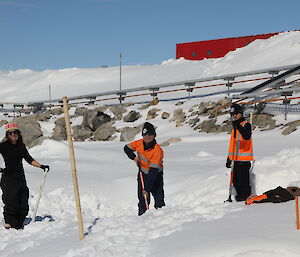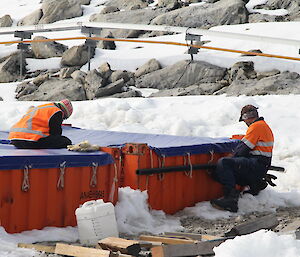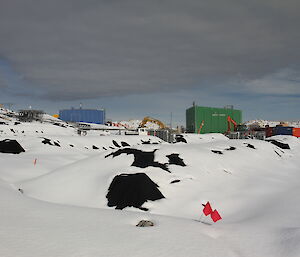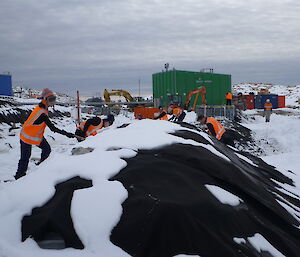The first wave of incoming personnel to Casey on the Hercules flight saw the arrival of the Remediation Team, which consisted of Bec, Deb, Johan and Danielle. Around two weeks later we saw the arrival of Lauren to increase the team’s numbers. The remediation team/contaminated sites group (part of the Terrestrial and Nearshore Ecosystems theme) assesses, develops and implements risk and remediation strategies of areas contaminated with hydrocarbons and heavy metals, this has been on-going at Casey station since the mid-1990s. Research and remediation activities around Casey include the following areas, the Main Power House (MPH), Old Casey, Thala Valley and the Emergency Power House (EPH).
The main job of the early incoming crew was to awaken the biopile site and conduct a first round of sampling. This site contains seven engineered biopiles which contain hydrocarbon contaminated soil from the MPH (six of the piles) and the EPH (biopile number seven). The native bugs in the soil use the fuel in the contaminated soil as a food source aiding in the break down and reduction of contamination. Not only does the team look at the hydrocarbon concentrations in the soil but they also look at the properties of the biopile liner materials and how they are affected by Antarctic conditions — these biopiles are the first of their kind in use in Antarctica. The liners are geosynthetic textiles which provide a barrier to prevent any contaminates from moving from the biopile soil into the uncontaminated soil at the site thus containing the contaminates in the biopile.
The awakening of the piles involves the removal of snow from the covers. At the start of the summer season there was a little bit of snow to remove this then allowed the team to remove the covers from the biopiles. This was not as easy as it seems as the covers were stuck frozen to the soil. With use of some gentle persuasion in the form of heating and the deft touch of Johan in Tiny Tim the excavator, the covers were removed and round one of sampling of the biopiles was completed by Johan, Bec, Danielle and Deb. These soil samples are now on their way back to the labs at the AAD, Kingston for analysis to check in on the progression of the remediation.
With the sampling complete the covers were placed back on and mother nature decided to test our patience at the end of November; the team’s plans of snow removal were thwarted by some heavy snow storms leaving the site covered in snow yet again. We were lucky enough to enlist the help of people around station who wanted to wield a shovel and remove snow. The removal of this snow is important as once it begins to melt we are faced with increase water around site and in the piles. The army of volunteers ranged from chefs, trades, the Aurora Basin team to people in transit on their way home from Davis — the remediation team is grateful for your help! With the snow removed the team could now turn their attention to the EPH site and preparing for round two of soil sampling.
The team is currently changing personnel on the ground with Bec and Deb having returned home — tagging in are Dan and Sam who will be here until February. The team has a busy work schedule which will keep them occupied for the summer. The team thanks all those on station and back at Kingston for their ongoing support.

